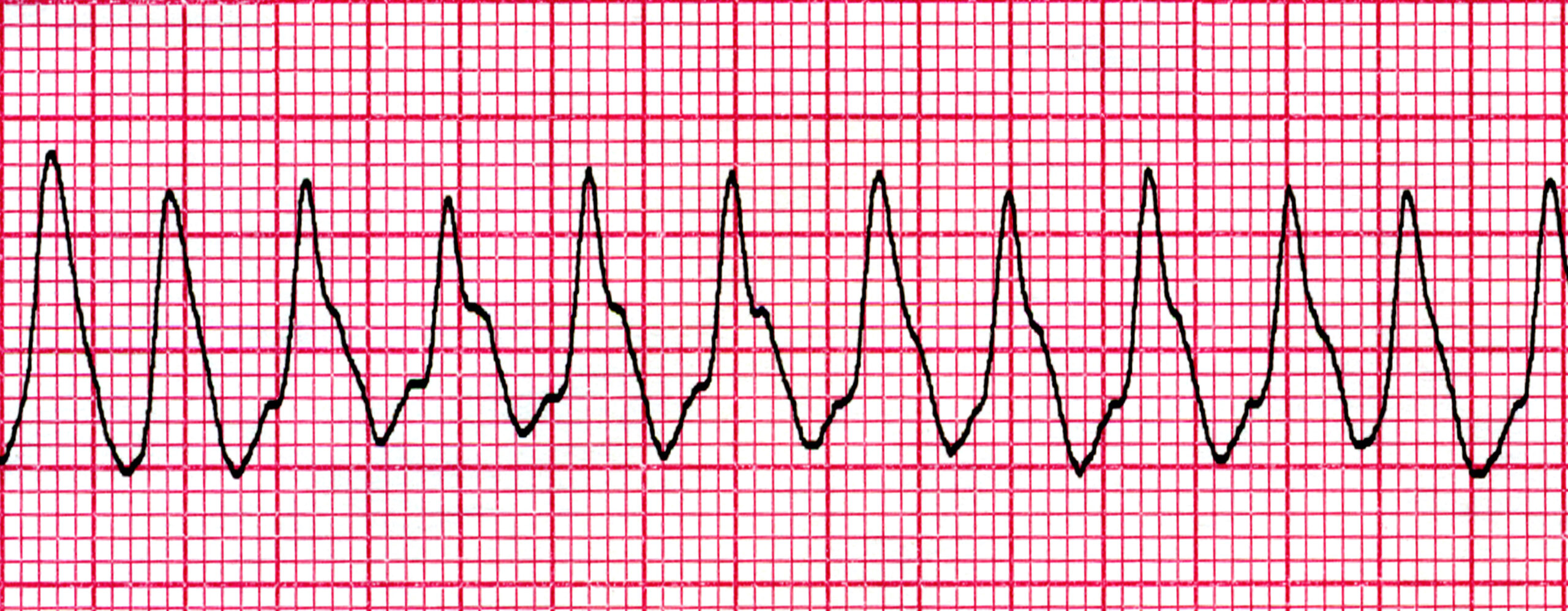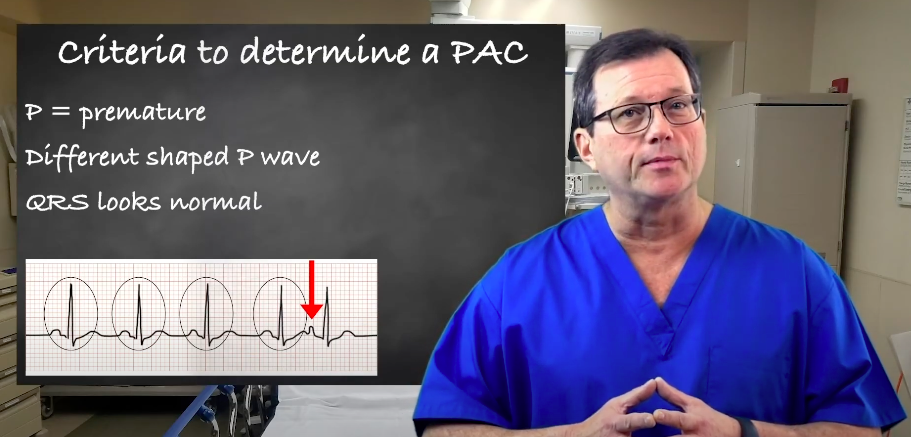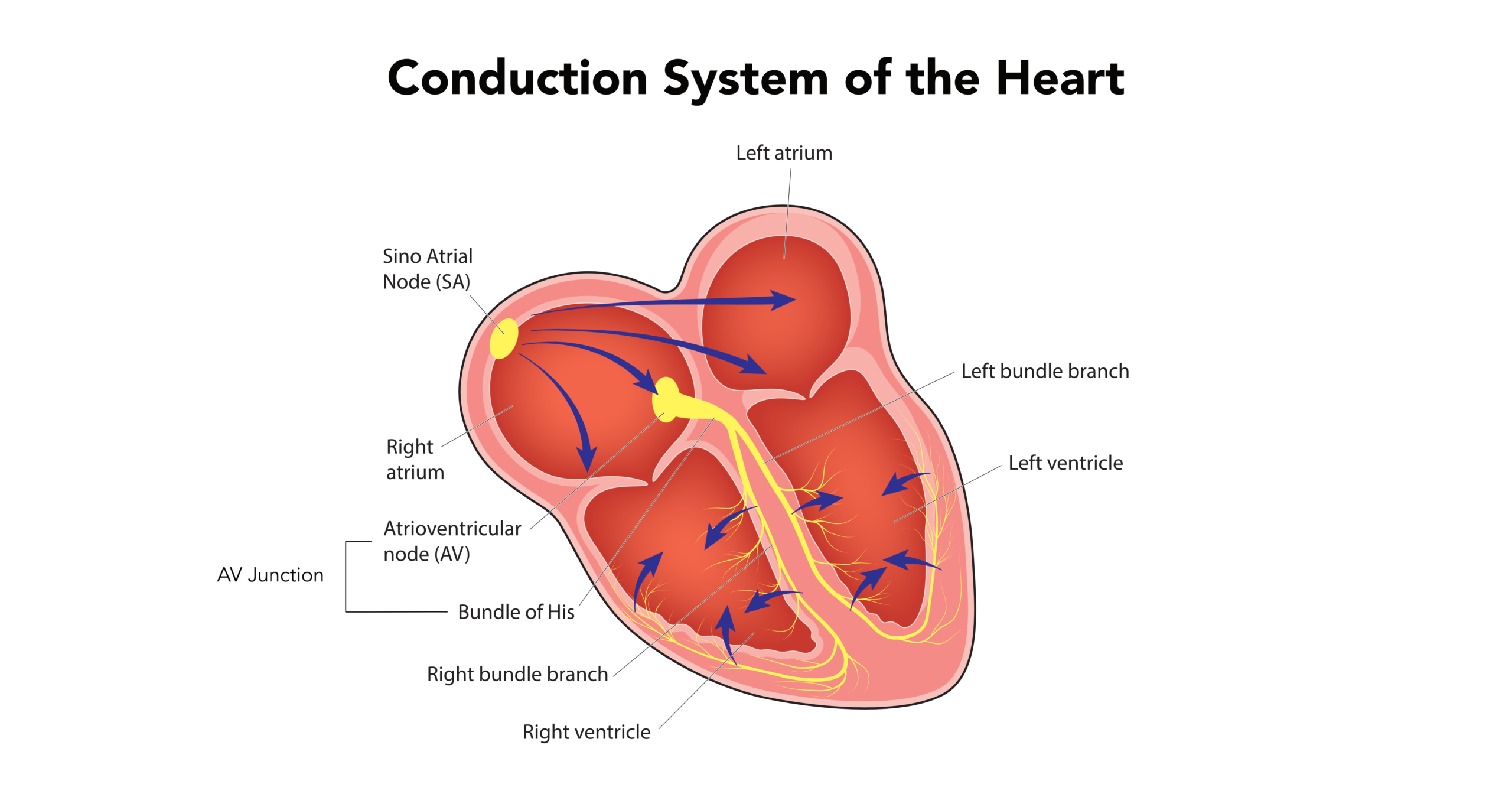Interpreting an ECG Strip
ACLS Certification Association videos have been peer-reviewed for medical accuracy by the ACA medical review board.
Article at a Glance
- A normal rhythm is regular, has a rate between 60 and 100 beats per minute and features a normal P wave, PR interval, and QRS complex.
- Determining regularity involves measuring the distance between the peaks (R waves) of QRS complexes.
- There are several methods that can be used to determine heart rate from a 6-second rhythm strip.
- The P wave is the most important as it provides a lot of information about the rhythm.
- The PR interval represents ventricular depolarization.
- A wide QRS complex indicates an abnormality in impulse travel through the ventricles.
When interpreting a rhythm strip, the following are taken into consideration:
- Regularity
- Rate
- P wave
- PR interval
- QRS complex
A sinus rhythm is a normal rhythm coming from the sinoatrial (SA) node, the healthy heart’s default pacemaker.1 A normal rhythm has a regular R-R interval, a rate between 60 to 100 beats per minute, and a normal P wave, PR interval, and QRS complex. Each of these are discussed below.
Related Video – Systematic Approach to ECG Interpretation
To determine if the patient’s rate is regular, the clinician uses a caliper to measure the distance between two R-R points (also known as R-R intervals), then checks to see if this distance is consistent throughout the 6-second strip. The 6-second electrocardiogram (ECG) tracing is usually printed at the bottom of the ECG report, which records the Lead II electrode, or monitor lead. The clinician then notes if the rhythm is: regular or irregular. An irregular rhythm is further classified into regularly irregular or irregularly irregular. A regular rhythm will have R-R intervals that are equidistant throughout the ECG strip. An irregular rhythm will have R-R intervals that vary. A regularly irregular rhythm will show a pattern of irregularity throughout the ECG strip. An irregularly irregular rhythm will have a chaotic R-R interval or no pattern of irregularity. Sometimes, in ECG tracings that record bradycardia, there will be an irregularity of one small square. This can still be considered a regular rhythm if there are no signs of obvious irregularity. The R-R interval is the time between two ventricular beats.Regularity

The adult cardiac rate at rest should be between 60 to 100 beats per minute.2 Bradycardia, or a slow heart rate, is defined as less than 60 beats per minute, while tachycardia, an abnormally fast heart rate, is defined as more than 100 beats per minute. The cardiac rate can be estimated using an ECG tracing. The easiest way to estimate cardiac rate in patients with a sinus rhythm is by counting the number of small squares in between two consecutive R waves. The heart rate is 1,500 divided by the number of small squares between two R waves. A faster but less accurate method is to divide 300 by the number of large squares in between two consecutive R waves. If the patient’s rhythm is irregular, the simplest method to estimate the rate is to mark 6 seconds on an ECG strip. To do this, count five big squares, which equals 1 second. A 6-second ECG strip should consist of 30 big squares. Then count the number of R waves in between. Find the heart rate by multiplying the number of R waves by 10. In the figure above, there are 11 R waves. Therefore, the heart rate is 110 beats per minute. Read: Immediate Post-Cardiac Arrest CareRate

In sinus rhythm, there should be an upward deflection occurring before the QRS complex in Lead II.3 It should be rounded and uniform in shape. The P wave represents the impulse coming from the sinoatrial (SA) node. When the impulse originates outside the SA node, the P wave morphology changes and there may even be a downward deflection. When two impulses occur in the atria and ventricle at roughly the same time, the P wave may disappear within the stronger T wave (representing ventricular depolarization), as shown on the strip below. In the figure above, the P wave has almost disappeared within the stronger T wave. The clinician looks for the P wave in all the leads. The absence of a P wave may denote atrial fibrillation, paroxysmal supraventricular tachycardia, or another abnormal rhythm. The number of P waves should equal the number of QRS complexes. If there are more QRS complexes than P waves, the rhythm may be an accelerated ventricular rhythm or a junctional rhythm. If there are fewer QRS complexes than P waves, the rhythm is likely to be some type of atrioventricular (AV) block. If the P wave occurs after the QRS complex, the rhythm may be a junctional rhythm, a ventricular rhythm with retrograde conduction, an AV nodal reentry rhythm, or an AV reciprocating tachycardia. The P wave is the most reliable finding compared to other waves. It provides a wealth of information to the discerning clinician.P Wave

Related Video – 12-Lead Electrocardiogram Interpretation
PR Intervals and QRS Complexes
The PR interval represents ventricular depolarization and is the period extending from the beginning of the P wave to the beginning of the QRS complex. The normal PR interval is 0.12–0.20 seconds (three to five small squares). Short PR intervals suggest Wolff-Parkinson-White syndrome.4 Prolonged PR intervals suggest a first-degree AV block.
A prolonged PR interval indicates that the impulse from the sinoatrial node took longer than normal to reach the intra-atrial pathways and the atrioventricular node.

The strip above demonstrates a first-degree atrioventricular block. The PR interval is 0.28 seconds.
The QRS complex represents depolarization of the ventricles and contraction of the powerful ventricular muscles. The normal QRS complex should last 0.06–0.10 seconds (1.5–2.5 small squares). A widened QRS complex denotes that the impulses took too long to travel through the ventricles. That may indicate bundle branch block, ventricular preexcitation, ventricular pacing, or ventricular tachycardia.

This strip demonstrates ventricular tachycardia. The QRS duration is 0.14 seconds.
When interpreting a rhythm strip, the clinician assesses the regularity, rate, P wave, PR interval, and QRS complex. Each element of the rhythm strip provides important information for evaluating the patient and their presenting condition.
More Free Resources to Keep You at Your Best
Editorial Sources
ACLS Certification Association (ACA) uses only high-quality medical resources and peer-reviewed studies to support the facts within our articles. Explore our editorial process to learn how our content reflects clinical accuracy and the latest best practices in medicine. As an ACA Authorized Training Center, all content is reviewed for medical accuracy by the ACA Medical Review Board.

